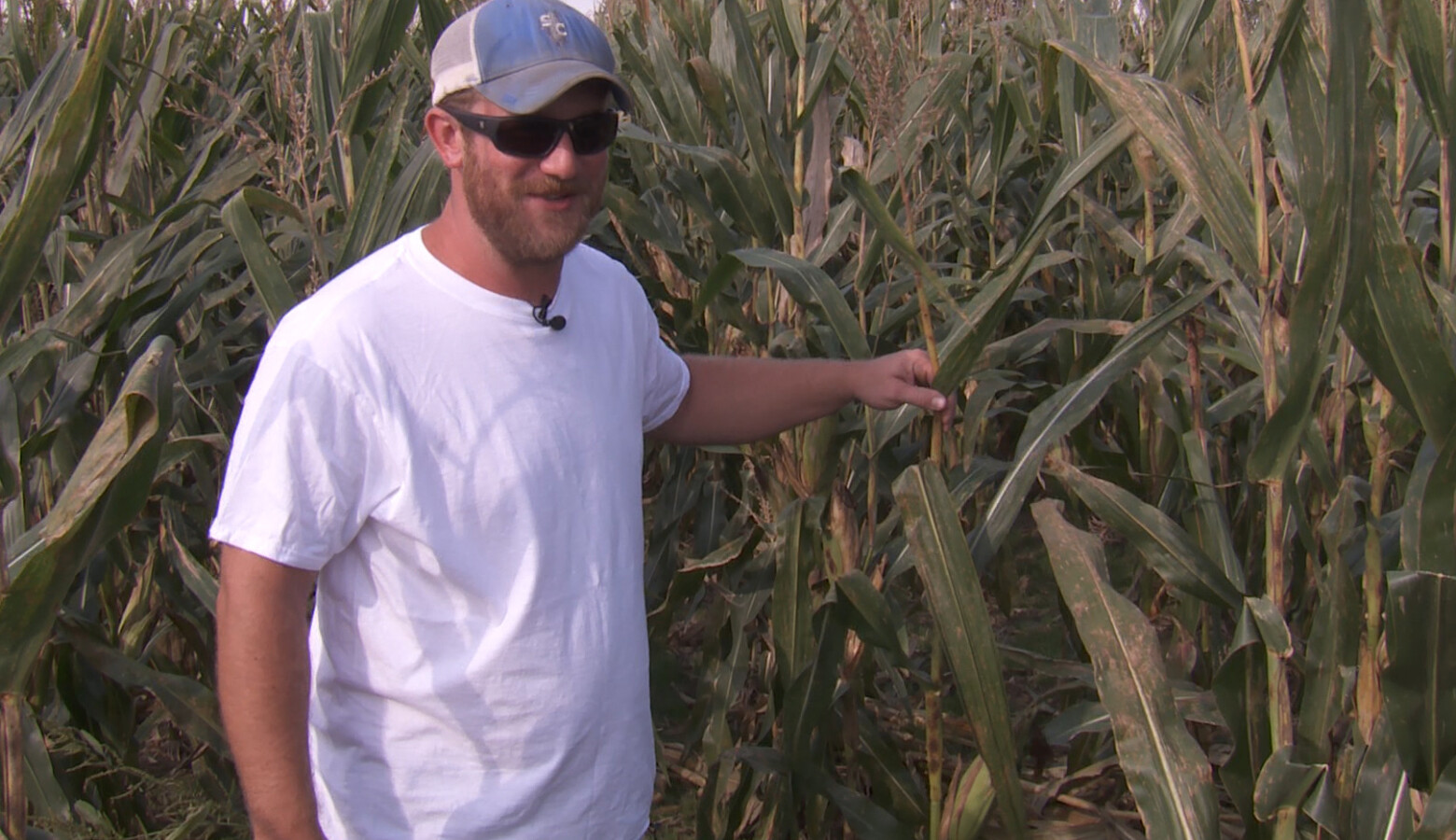Farmers Who Rent Less Likely To Do Practices That Improve Soil, Water

Almost half of all Indiana farmland isn’t owned by the farmer who works it — it’s rented out. In the same way people who rent apartments are unlikely to invest in them, studies show farmers who rent land are less likely to do conservation practices.
These practices improve the soil, the water quality, and make farms more resilient to the effects of climate change. Researchers say in order to get more farmers to adopt these practices, landowners are going to have to become more involved with what goes on on the farm.
It’s late September and Hendricks County farmer Justin Coleman bends down between rows of corn to show how well his green, rye cover crop is coming in. Cover crops help to add nutrients to the soil and keep that soil in place during heavy rains.
“It comes on real thick like that. It almost looks like some grass you’d see in your yard,” Coleman says.
He’s been doing conservation practices like cover crops for about a decade. The first time was on his family’s land.
“I kind of went on my own and just did it and, you know, in the end it worked out,” Coleman says.
But with some of his other landlords — and he has seven — it’s been more of a conversation. Last winter, Coleman says he picked up a new farm. The landlord was concerned planting cover crops would crowd out the cash crop he wanted to grow — but he agreed to give it a try.
“We’ve talked a lot through the summer, you know, and he’s watched his farm and you know he’s kind of getting a grasp of how things are working,” Coleman says.
Coleman considers cover cropping and no-till agriculture a lifestyle — and he says he’s not willing to change for a landlord. But not every farmer who rents feels that way.
The Barriers Farmers Face To Adopting Conservation Practices
A study co-authored by Purdue researcher Pranay Ranjan shows many farmers feel there are barriers to adopting these kinds of conservation practices — and a lot of that has to do with their relationship with their landlords.
He says many farmers have one-year leases. By the time some of these conservation practices get established, their landlords could decide to rent the land to someone else or sell it.
“Which creates this sense of insecurity that if I don’t have access to this land in the next few years, then how will I reap benefits of actually making investments,” Ranjan says.
Ranjan says it’s also a competitive market out there right now — there are a lot of farmers and not a lot of land to rent. Some farmers feel pressured not to rock the boat.
But more than anything, Ranjan says the biggest barrier to helping farmers adopt conservation practices is educating landowners. The number of landowners in the U.S. who haven’t farmed before is growing — and he says it’s a challenge to get information to them.
These landlords tend to be older than their farmers. About 37 percent of them are women and Ranjan suspects that number may be growing too. Many of them may have inherited the land due to a death in the family and are new to managing farms.
“As a female non-operating landowner, you are just letting them farm the way they’re farming, you do not feel that you have that much say,” Ranjan says.
But there are groups where women landowners can come together and support each other.
Empowering Female Landowners To Make Positive Changes
At its learning circles, the group Women For The Land gives female landowners information about conservation and what funding is available to help them get started.
Farmer Doris Scully works for the federal Natural Resources Conservation Service in Indiana and leads some of these circles. She says more than anything, they’re safe spaces where female landowners can learn from each other, share their stories, and gain the confidence they need to make these decisions.
“It’s your land, you can decide what happens on it and what doesn’t happen on it. And you know, if you don’t like the way it’s being cared for, then you can do something about it,” Scully says.
After all, what happens on the farm doesn’t stay there. Soil that’s been tilled and left bare is more likely to run off into nearby streams and lakes during heavy rains. That pollution can harm wildlife and even drinking water sources.
The U.S. Department of Agriculture says farmers and their landowners can make a difference. That’s why there are financial incentives to help farmers adopt conservation practices through the federal government and the state — such as the Clean Water Indiana program. You can also find informational videos on different conservation practices, helpful tips for new farmers, and info on the steps to receive federal assistance.
The state also has workshops that farmers and landowners can attend through the Conservation Cropping Systems Initiative and the Indiana Association of Soil and Water Conservation Districts.
Contact Rebecca at [email protected] or follow her on Twitter at @beckythiele.
Indiana Environmental reporting is supported by the Environmental Resilience Institute, an Indiana University Grand Challenge project developing Indiana-specific projections and informed responses to problems of environmental change.


